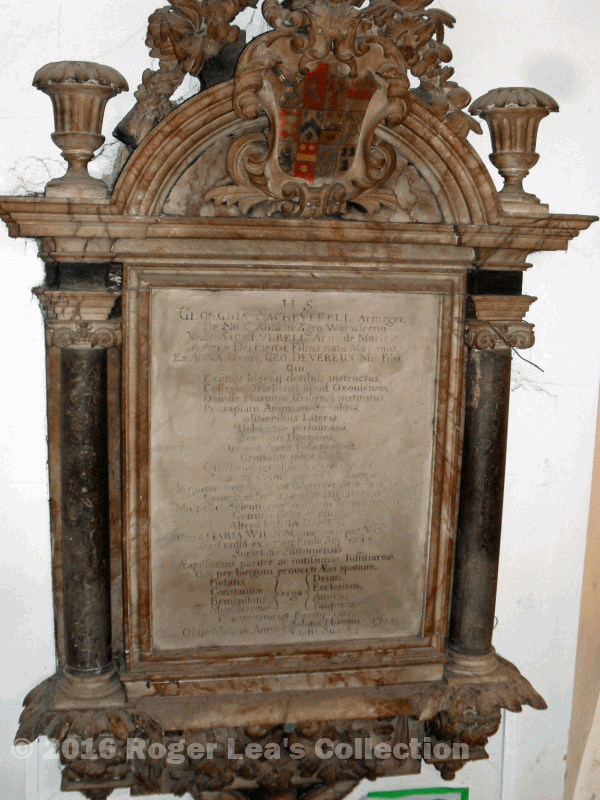“Gravestones tell truth scarce forty years” wrote Sir Thomas Browne in 1658, false if you look round old churchyards today, where many stones from the nineteenth century are perfectly legible, but true in the sense that the lettering will eventually wear away. That is why those who could afford it wanted the family monuments to be inside the parish church.
Most of the monuments inside Sutton Parish Church fared no better than the gravestones outside - the burials in the Chancel were obscured when the floor level was raised, and the wording on the incised slabs covering graves in the nave has been worn away by the passage of feet over the centuries. Even the magnificent Bishop Vesey tomb has been rearranged several times.
Top families rated a vault in their local church where family members would be buried, like the seventeenth-century Pudsey vault in Sutton church, surmounted by a sculptured monument depicting Henry Pudsey and his wife Jane. Alterations to the church, such as new windows, new galleries or family vaults, were (and are) strictly controlled, and could only be done if the Bishop and the Diocesan Court gave permission. This permission was called a faculty, and a number of faculties for making galleries in Sutton church were granted in the first half of the eighteenth century; copies of these documents are held in Lichfield Record Office.
A faculty was awarded to George Sacheverell of New Hall, Sutton Coldfield in 1706, for a vault and monument in Sutton church. The document states that Sacheverell is a wealthy man of good family living in a moated hall, “but there he is not in possession of a mausoleum”. The vault is between the south door and the west wall of the church, where the floor level is raised fourteen inches to accommodate it (now used as a children’s crèche area). The monument above the vault extends over part of the windows, the blocked-in panels can be seen from outside the church.
The Sacheverell vault survived for 250 years, but then the floor above the vault was a victim of dry rot. In 1965 the floor was removed, and it was found that the vault contained five lead coffins. These were identified as George Sacheverell, died 1715; Mary Chadwick his niece, died 1770; Charles Chadwick, her nephew, died 1828; Frances Chadwick his wife, died 1804; the fifth was not identified.
The splendid monuments and historical features to be found in Holy Trinity Parish Church in Sutton are normally only seen by churchgoers, as the church is kept locked most of the time for security reasons. However, the public will get a chance to see the church by attending the events organised by the newly-formed Friends of Holy Trinity Parish Church, and the friends hope to be able to make the beauties of the church better known and more accessible in the future. The Diocese has just granted a faculty for alterations to the church which will improve access.
